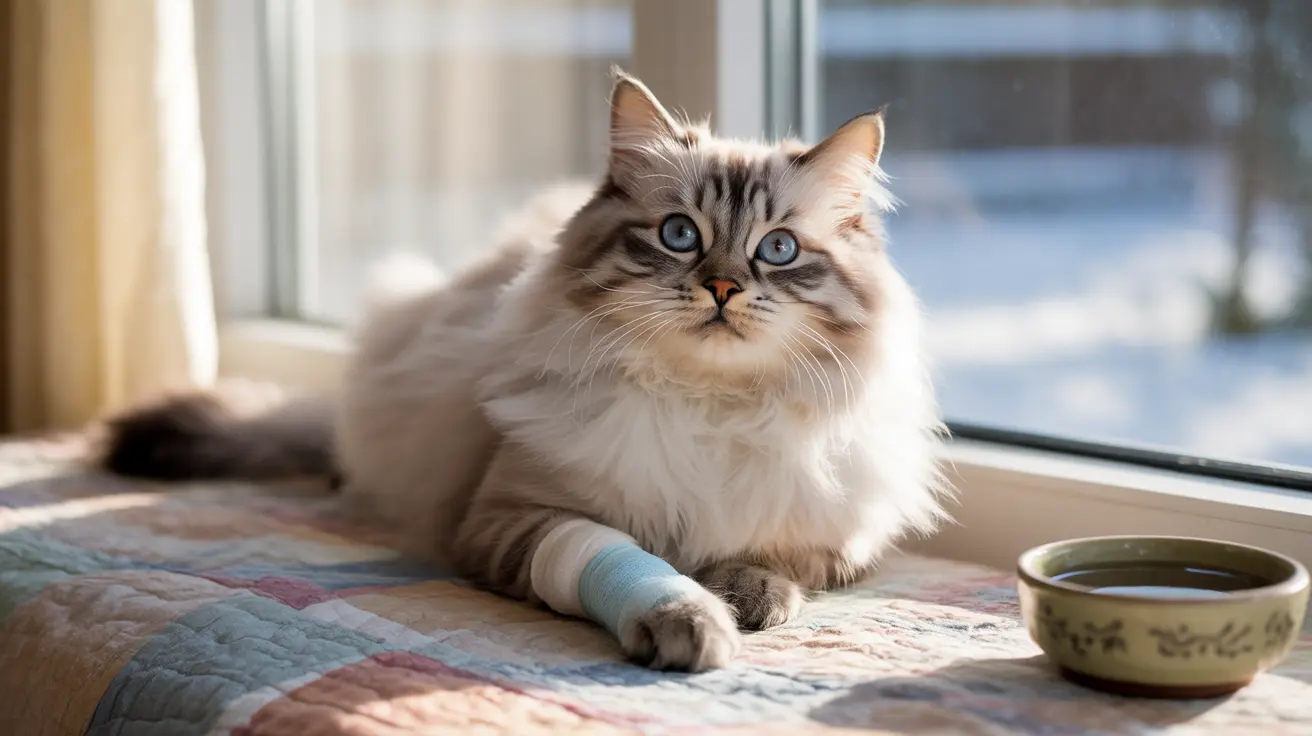When to Bandage vs. When to Seek Emergency Care
Not all paw injuries should be bandaged at home. Temporary bandaging is appropriate for:
- Minor cuts or scrapes that are actively bleeding
- Protection of a wound while transporting to the vet
- Following veterinary instructions for at-home care
Seek immediate veterinary care if you notice:
- Bleeding that continues beyond 10-15 minutes of direct pressure
- Deep puncture wounds or embedded objects
- Severe swelling or discoloration of the paw
- Signs of infection (pus, foul odor, excessive warmth)
- Broken bones or severe tissue damage
Essential Materials for Paw Bandaging
Before starting, gather these supplies:
- Non-adherent sterile gauze pads
- Roll gauze
- Cotton padding material
- Cohesive bandage (vet wrap)
- Medical tape
- Clean towel for restraint
- Antiseptic solution (as recommended by your vet)
- Scissors
- Pet first-aid kit
Step-by-Step Bandaging Technique
1. Preparation and Cleaning
Start by gently cleaning the wound with mild soap and water or a veterinary-approved antiseptic solution. Pat the area dry with clean gauze. Have all materials ready and easily accessible before beginning the bandaging process.
2. The Three-Layer Approach
Professional bandaging uses three distinct layers:
- Primary Layer:
- Apply non-adherent gauze directly over the wound
- Ensures the dressing won't stick to the injury
- Secondary Layer:
- Add soft padding material
- Provides cushioning and absorption
- Wrap from above the joint down over toes and back up
- Outer Layer:
- Apply cohesive bandage for protection
- Pre-stretch the material to prevent constriction
- Maintain even pressure throughout
3. Proper Application Technique
Follow these critical steps:
- Start wrapping above the wrist or ankle joint
- Include all toes in the bandage
- Overlap each wrap by 50%
- Maintain consistent, gentle pressure
- Secure the end with medical tape
Monitoring and Maintenance
After applying the bandage:
- Check toe temperature and color regularly
- Ensure you can slip 1-2 fingers under the top edge
- Keep the bandage clean and dry
- Change daily or as directed by your veterinarian
- Watch for signs of complications
Frequently Asked Questions
How do I properly bandage a cat's paw at home to control bleeding and protect the wound?
Follow the three-layer technique: start with non-adherent gauze, add padding, and finish with a cohesive wrap. Always extend the bandage above the joint and include all toes, maintaining gentle, even pressure throughout.
What signs indicate that my cat's paw injury needs urgent veterinary care instead of at-home bandaging?
Seek immediate veterinary care if bleeding continues beyond 15 minutes, there are deep punctures or embedded objects, severe swelling occurs, or you notice signs of infection like pus or foul odor.
What materials do I need to safely bandage a cat's paw, and how do I apply the three-layer bandage correctly?
Essential materials include non-adherent gauze, roll gauze, padding, cohesive bandage, and medical tape. Apply in three layers: primary (non-adherent), secondary (padding), and tertiary (protective wrap), extending above the joint.
How can I tell if a cat's paw bandage is too tight or too loose, and how often should it be changed?
Check that you can slip 1-2 fingers under the top edge. Monitor for cold or swollen toes. Change the bandage daily or as directed by your veterinarian, keeping it clean and dry.
What steps should I take to prevent my cat from chewing or slipping off its paw bandage?
Use an e-collar (cone) to prevent chewing, ensure the bandage extends above the joint to prevent slipping, and maintain proper tension throughout the wrap. Monitor your cat's behavior and contact your vet if the bandage becomes compromised.
Remember, while knowing how to bandage a cat's paw is important for first aid, professional veterinary care is essential for proper treatment and healing of significant injuries. When in doubt, always consult with your veterinarian for guidance on your cat's specific situation.






